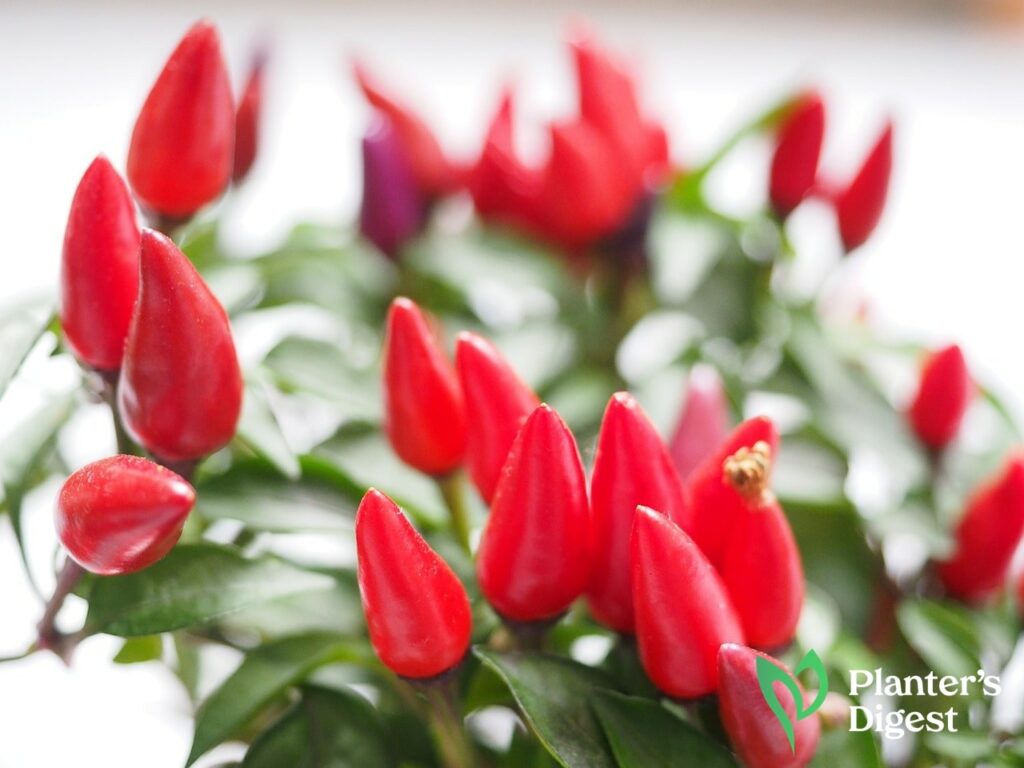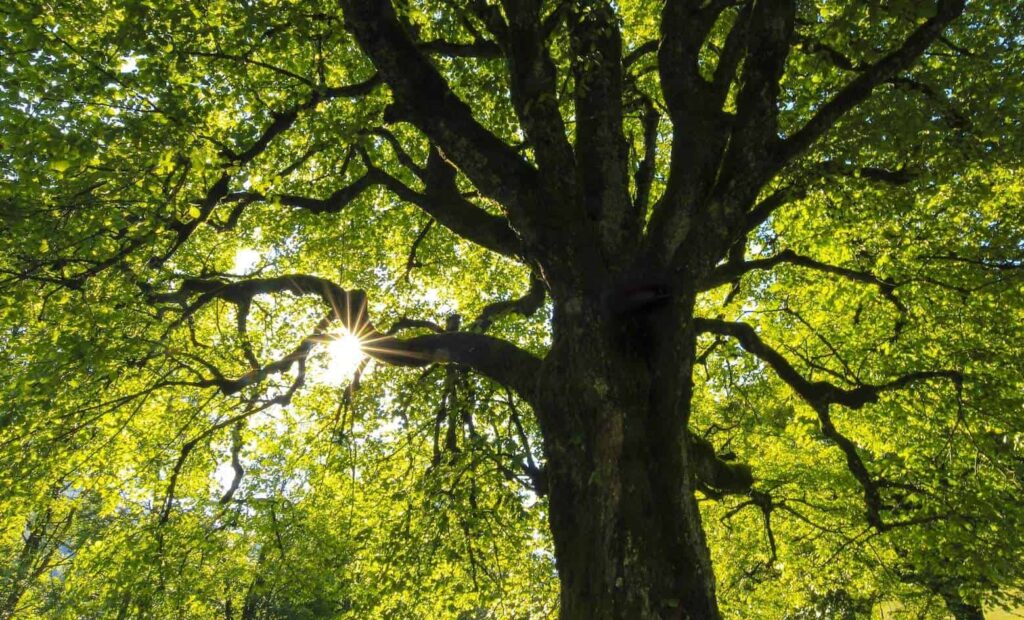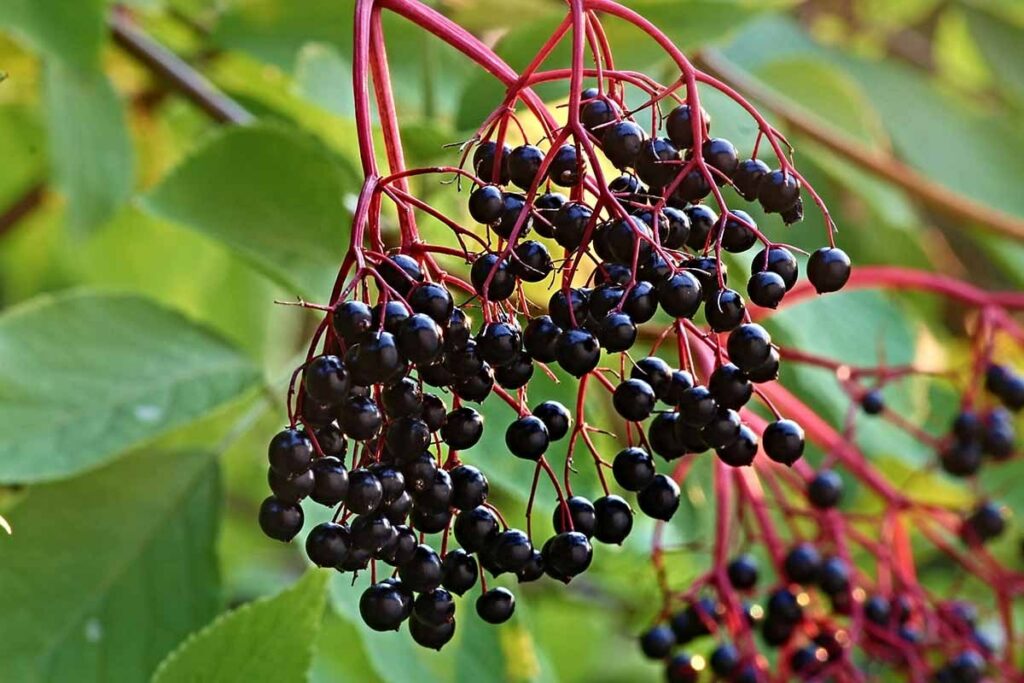Everyone loves a kick of spicy flavor on their meal, which is what most pepper varieties are born to do.
But how long does it take for pepper plants to produce fruit and keep up with your need for spice? Let’s find out how long they can do so and the different ways to speed up their production.
When do pepper plants produce fruit?
Generally, pepper plants can take 60 to 150 days to produce fruit, depending on the variety. Hot peppers typically take longer to produce fruit than bell peppers.
Sweet pepper plants typically produce fruit 9 to 13 weeks after transplanting, while hot pepper plants can take up to 21 weeks.
On the other hand, if you grow peppers from seed, it will take longer for the plants to bear fruit because it takes time for the seeds to germinate, grow in size and be transplanted in the garden.
Here’s a table comparing sweet and hot pepper varieties in terms of length of fruit production.
| Pepper Type | Start with Seed | Start with Transplant |
| Sweet pepper | 116 to 220 days | 90 to 120 days |
| Hot pepper | 136 to 250 days | 100 to 130 days |
Germination time for pepper seeds typically takes 7 to 14 days. Once the seeds have germinated, the plants must grow for 56 to 70 days before bearing fruit.
So, based on the table above, if you start from the seed phase, it can take anywhere from 116 to 220 days to harvest your first ripe peppers. But if you use transplants, you can gather your peppers as early as 90 to 120 days.
Once your peppers ripen, you can pick them up any time. But note that they will become sweeter and have more vitamins A and C the longer you keep them attached to their stems.
Here’s a table showing the different ripening periods of pepper varieties.
| Pepper Variety | Unripe (days) | Ripe (days) |
| Banana | 95 | 115 |
| Bell | 90 | 110 |
| Carolina Reaper | 130 | 150 |
| Cayenne | 95 | 1151 |
| Ghost | 20 | 140 |
| Habanero | 110 | 130 |
| Hatch Chile | 100 | 120 |
| Hungarian Wax | 90 | 110 |
| Jalapeno | 100 | 120 |
| Lunchbox | 85 | 105 |
| Poblano | 90 | 110 |
| Scotch Bonnet | 110 | 130 |
| Serrano | 110 | 130 |
| Shishito | 85 | 105 |
| Thai Chili | 115 | 135 |
H2: Pepper Plant Growth Timeline
Pepper plants can take 3 to 5 months to grow from seed, depending on the type of pepper. For instance, bell peppers are ready for harvest in 90 days, while habaneros take 150 days to ripen fully.
All pepper plants generally experience the following planting stages – germination, growth, flowering, fruiting and ripening.
Below is an overview of when and what happens in a pepper plant at every stage.
| Planting Stage | Time | Key Indicators |
| Germination | 5-10 days | Seeds start to crack open, and roots begin to emerge. |
| Growth stage | 6-8 weeks | Leaves and stems start to grow. |
| Flowering | Throughout the growing season | Flowers begin to form. |
| Fruiting | 6-8 weeks after flowering | Peppers start to develop. |
| Ripening | 3-4 weeks after fruiting | Peppers change color. |
During the germination stage, the seed will crack open and develop small roots and stems in the soil.
This will be followed by the growth stage, where the pepper plant vigorously grows its leaves and stems. At this point, the pepper plant needs plenty of sunlight, water and nitrogen for the optimum development of its stems and leaves.
The pepper plant will then enter the flowering stage, where its flowers will bloom and wait to be pollinated, whether naturally or not.
After pollination, the pepper plant will undergo the fruiting stage, where it will grow peppers that change from green to red, yellow, or orange.
Finally, the ripening stage will bring a bountiful harvest of brightly-colored and flavorful peppers, ready to spice up your dishes.
Factors That Affect Fruit Production of Pepper Plants
Essentially, the quality of care you give your pepper plants will determine how much fruit you get each year.
Let’s understand how each factor affects the pepper plant’s fruit production.
1. Temperature
Pepper plants are tropical beings, and they love the heat. So, if the temperature drops too low, they might stop producing fruit or even die.
If you transplant them outside, ensure the temperature is consistently above 55 to 60 °F. On the other hand, if you’re starting seeds indoors, make sure the soil temperature is at least 65 to 75 °F.
2. Watering
Pepper plants need regular and consistent watering. The best way to know when to water your pepper plants is to feel the soil with your fingers.
If the soil feels dry 2 or 3 inches below the surface, it’s time to hydrate your pepper plant.
If you underwater them, your peppers may grow smaller than regular or suffer from blossom end rot. On the other hand, if you overwater your pepper plants, the roots may rot, and the plant may die.
We also recommend watering your pepper plants early in the morning to give them ample time to soak into the soil before nightfall.
Similarly, you should avoid getting your pepper plants’ leaves wet because these can become breeding grounds for mold growth, bacteria, fungi, viruses and other diseases.
Always water from below, near the stems at ground level and close to the roots. This is best achieved through the drip irrigation system, where water is delivered directly to the plant’s roots, helping you conserve water while keeping your plant healthy.
3. Fertilizing
Add some compost to the soil before transplanting your pepper plants in your garden. It will provide organic material and nutrients for your plants as they grow.
The best part is that you can make compost yourself! Compost comes from ordinary yard and kitchen waste, like vegetable scraps, fruit peels, and coffee grounds.
Compost can add organic material and nutrients to your soil and improve soil structure and drainage. As a result, your plants can absorb as many nutrients as possible to grow strong and healthy.
To be sure, you should always test your soil to know its specific nutrient deficiency. It’s vital not to overfertilize pepper plants because too much fertilizer can burn the roots and even kill the plant.
4. Pruning
Pruning pepper plants can help them grow bigger and healthier. Prune their pepper plants’ lower leaves and branches to encourage the plant to focus its energy on producing fewer but larger peppers.
Pruning can also help prevent disease spread, reducing the amount of dirt and moisture that can splash up onto the leaves and branches.
5. Support
Pepper plants also need support. By this, we mean those vertical structures like cages, trellises and walls to keep it upright.
Supporting your pepper plants will help them to grow straighter and taller, take up less space in your garden and keep their leaves and fruit off the ground, thereby preventing diseases.
One option is a wired cage, a sturdy structure that can hold up even the tallest pepper plants. You can also use trellises made of latticework or wire, allowing the pepper plant to grow over the trellis.
How to Maximize Pepper Production
Here are ways how to make your pepper plant produce the most fruits.
1. Make the most of the growing season.
Pepper plants can produce peppers for as long as the weather is right. In cooler temperatures, peppers may take longer to ripen.
For instance, in Atlanta, Georgia, bell peppers can be harvested from the Fourth of July to Thanksgiving.
In the case of hot pepper seeds, you can plant their seeds a week or two earlier than sweet peppers so you can enjoy both varieties at the same harvest period.
You can also increase your harvest by planting pepper seedlings after the last frost and letting them grow in the latter months of the year.
Ultimately, it’s essential to know the different harvest times for peppers and the climate where you’ll plant them to make the most out of every growing season.
2. Increase light exposure.
Peppers need at least 6 hours of sunlight daily, so make sure you place it in a place with plenty of sunlight.
Sunlight provides the energy that plants need to grow. If you have growing peppers indoors, then the use of grow lights will give them the necessary sunshine.
Pepper plants still need a lot of suns to ripen their fruits. The ripening process takes time because the plant needs to finish forming the seeds inside the peppers.
Sunlight helps the plant do this. If your pepper plants aren’t getting enough sunlight, they might not ripen their fruits properly.
You can change to another area with more sun if your pepper plants are in pots. If your place is shaded, you may need to grow your pepper plant in containers and move them to a sunnier spot.
3. Pinch the flower buds.
Pepper plants may flower too early if they get too big in their starter containers. To prevent this, pinch off the flower buds when the plant is still in its starter container or as soon as it’s been transplanted.
This will help the plant to focus on growing roots and leaves instead of producing fruit which it should do only after transplanting.
4. Pick mature peppers.
Harvesting your peppers as soon as they are fully mature will encourage the plant to yield more.
It’s like a mind-conditioning hack. Pepper plants are stimulated to produce more peppers when their previous peppers are harvested.
Waiting too long to harvest your peppers can make them overripe and drop off the plant.
Additionally, overripe peppers are less flavorful than peppers that are picked when they are fully mature.
5. Check soil quality.
Peppers need well-draining soil rich in organic matter to develop successfully. This type of soil allows the roots to breathe and does not allow them to rot either.
On the other hand, adding organic matter provides the peppers with the needed nutrients to grow strong and healthy.
Since organic matter consists of decomposed plant and animal material, it’s rich amounts of nutrients that improve draining soil and fertility and aid in feeding crops.
Another type of organic matter high in nutrients is aged manure. It is made from animal manure that has been composted for a few months but is rich in nitrogen which pepper plants in the growing stage need.
6. Cut back on nitrogen.
There’s the right time to introduce fertilizer to your pepper plant.
When your pepper plants are in the early stages of growth, nitrogen-rich fertilizers help them to develop a strong root system and healthy leaves and stems.
As your pepper plants start to blossom and fruit, you’ll have to cut back on nitrogen and increase the amount of potassium and phosphorus-rich fertilizers. Potassium helps to improve fruit development, and phosphorus helps to promote flowering.
6. Maintain proper soil pH.
The ideal pH level for pepper plants is 6.0 to 7.0. Any level higher or lower than this number harms the pepper plant’s growth.
Growing pepper plants in very alkaline or high pH level environments can hinder their ability to absorb essential nutrients from the soil because nutrients become less soluble, difficult for the roots to absorb, stunting growth and fruit production.
On the other hand, if the soil pH is too low or acidic, the pepper plant will have inhibited mineral and water uptake. As a result, pepper leaves will slowly turn dull, be more susceptible to damage and diseases and eventually die.
7. Bring pepper plants indoors during winter.
Pepper plants are highly sensitive to cold weather. Too much exposure to cold temperatures, especially during winter, can easily damage or kill them due to frost.
So, bringing your pepper plants indoors will allow them to survive the winter and start growing again in the spring.
Another benefit of bringing these plants indoors during the winter is that you can train them to grow bushier and produce more fruit in the coming year.
7. Water the pepper plant properly.
Watering pepper plants in the morning is a great practice to keep them healthy and hydrated.
It’s also equally important to match your watering schedule with the weather. For instance, in hot, dry weather, you’ll have to water your pepper plants daily, while in cooler weather, you can simply water them once or twice weekly.
Over-watering your pepper plants will definitely stress them out. It’s important to water them slowly to make sure that the essential nutrients aren’t washed away.
If the soil is too wet, it will prevent the roots from absorbing oxygen, leading to root rot and the eventual death of your pepper plant.
To avoid root rot, water your pepper plants deeply and frequently. This means watering the plants so that the soil is soaked but not so much that the water pools around the roots.
FAQs on Pepper Plants
It takes bell peppers 60 to 90 days to produce fruit after planting, although you can extend the harvest by picking peppers while they are still green and allowing them to ripen indoors.
A healthy bell pepper plant can produce two to four fruits anytime during its growing season.
Pepper plants do not grow back every year. They are annual plants, which means they only live for one growing season.
It takes bell pepper seedlings about one to three weeks from germination to spout their first set of stems and leaves and become ready for transplanting.
You do not need two pepper plants to produce fruit because they are self-pollination plants, which means they can set fruit by themselves.
Pepper plants do not produce fruit year-round. They only produce fruit during the warm months, typically from spring to fall.
The average pepper plant will produce 6 to 8 peppers per plant. However, some varieties with smaller peppers can have more than ten peppers per plant.
Pepper plants die after harvest because they are annual plants, which means they only live for one growing season.
When grown outdoors, pepper plants live only for one year, usually between the last and first frosts. However, if grown in a greenhouse, a pepper plant can live for three to four years.





